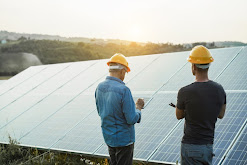Rethinking the Solar Revolution: Beyond Efficiency
The sun, the beacon of life and energy, has long captured our imagination. Scientists are now rethinking how we harness its power with solar energy. While the search for ever more efficient solar cells remains a cornerstone, a recent study by researchers at the Cavendish Laboratory (UK) and AMOLF (Netherlands) sheds light on a new frontier: optimizing solar energy capture for real-world applications.
Beyond efficiency: A new perspective
The research team explored the potential for fine-tuning solar cells to different intensities of sunlight around the world. They used machine learning models and neural networks (AI) to carefully map solar radiation patterns in different locations. This data was then integrated into an electronic model to simulate the performance of the solar cell under various conditions.
The results, published in the respected journal Joule, surprised even the researchers. "We found that pushing the efficiency of solar cells to the absolute limit is a major challenge," explains Dr. Tommy Bykey, lead author of the study and a research fellow at the Cavendish Laboratory. "This realization prompted us to explore alternative strategies to maximize the capture of solar energy."
This shift in focus has enormous potential for communities around the world. Rather than just looking to improve cell efficiency, the research suggests a broader approach, giving communities a wider range of opportunities to use solar energy efficiently.
Unveiling the Future: Rethinking Solar Panels
Imagine solar panels that seamlessly adapt to their environment. Panels with the possibility of origami-like folding or light transparency organically fit into the environment - these are not futuristic fantasies, but possibilities explored by researchers.
Thanks to increased durability and versatility, solar panels can be integrated into a variety of spaces, from roofs to facades, while guaranteeing long-term performance. Dr Baiki elaborates: “We envision solar panels that can function optimally in different locations. Flexibility, partial transparency, and collapsibility are key characteristics we explore. This adaptability allows you to place it almost anywhere."
Location, Location, Location: Optimizing Solar Capture
The study also highlights the importance of strategic placement of solar panels using capture device models. This approach optimizes the placement of panels to maximize sunlight absorption, potentially leading to significant improvements in overall solar energy collection.




Comments
Post a Comment